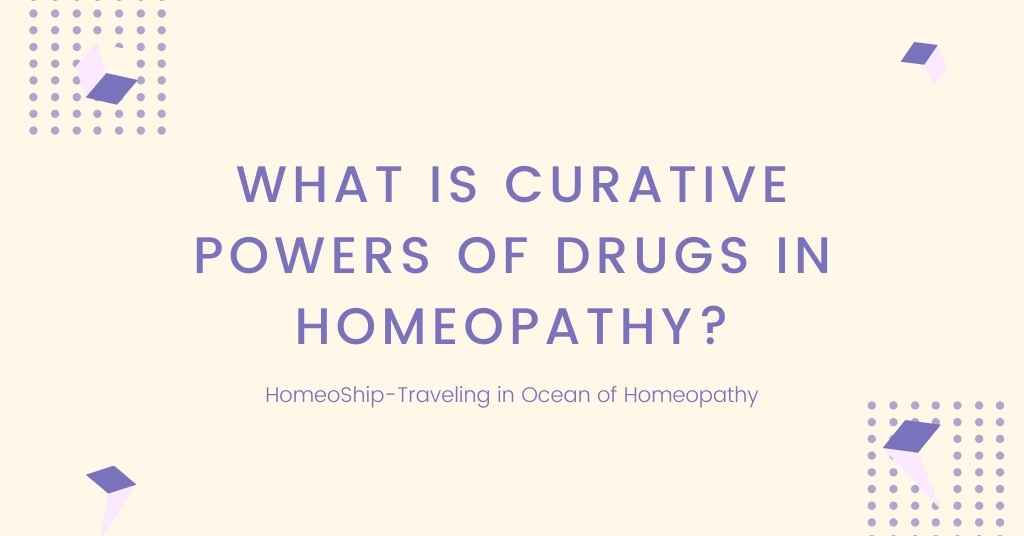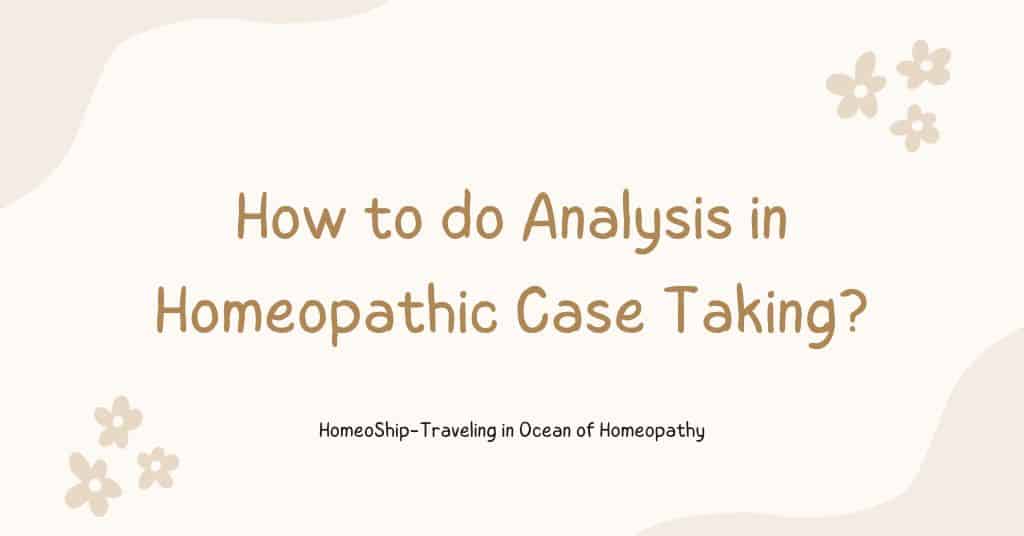Let’s understand today’s topics, those who are new here, kindly read our previous post for more details
Method of Understanding the Curative Powers of Drugs

The curative power of medicine is its powers. The only reliable method of understanding the curative powers of the drugs is by proving them on healthy human beings, on both the sexes, on all age groups, in different potencies and doses. This knowledge cannot be ascertained by mere reasoning, theoretical explanations, studying physical properties of the medicinal sources, philosophical and logical debates, etc. but only by proving these medicinal substances on healthy human beings, this method makes homeopathy a pure science.
Hahnemann recorded the symptoms produced by each drug on healthy humans in his Materia Medica Pura. Hence, Hahnemann can be called the “Father of human experimental pharmacology”, and homeopathic materia medica can be called the “Human functional pathology”.
Right from the Hippocratic period, many methods were employed for obtaining the curative powers of drugs. Few important methods are discussed below:
Medicine of speculation
These methods are constructed either on the ground of philosophical speculations or faulty hypothetical experiences based on traditional beliefs or past experiences. Some methods are worth mentioning.
i. Empirical way:
This is based on purely external observation and gives less or no importance to practical experimentation. The knowledge of the curative power of drugs is constructed on empirical knowledge.
ii. Pseudo-rational way (Doctrine of Signature):
The doctrine of signature is the best example of this method. The doctrine of the signature can be defined as the understanding of the action of the drugs based on their physical appearance and properties. This is a pseudo-rational way of drug proving.
“The powers of different medicines in the materia medica were inferred from their physical, chemical and other irrelevant qualities: also from odor, taste and external aspect”, says Hahnemann in the preface to the 2nd edition.
The concept of the doctrine of signature dates back to the time of Aesculapius, the Greek god of healing. The doctrine of signature is based on superficial observations. Symbolism, biological observations, serve as guides in the doctrine of signature.
It is a method of finding the similarities between the plant’s appearance and the symptoms of disease expressions of the human body. But, Hahnemann did not accept this method as the rational method of drug proving.
Example of Curative Powers of Drugs:
- Sanguinaria canadensis (bloodroot) is considered as a good remedy for hemorrhagic conditions as it contains bright red juice.
- Pulsatilla plant is tall and slender and moves by the slightest breeze. So according to the doctrine of signature, it is a good remedy for patients of mild nature and changeability of symptoms.
- Leaves of the Brahmi plant look like a kidney or like the brain, so it is a good remedy for urinary problems and neurological disorders respectively.
- The Leaf of the Cyclamen Plant resembles a human ear. Hence it must be a good remedy for ear discharges.
- The branching pattern of the plant Crassula obliqua (Jade plant) and the human respiratory system are similar hence it is an effective remedy against respiratory complaints.
- The plant Chelidonium majus was considered curative for the disorders of liver and gall bladder pathology due to its yellow-colored bile-like juice.
- Jugulans regia (walnut) is believed to have good effects on migraines, headaches, and disorders of the brain based on its resemblance of the kernel to the human brain. This method of understanding drugs is very superficial and unscientific.
That’s why the master denies this fact (method).
Also Read:
Medicine of Experience
This is the purely rational and scientific method of obtaining the curative action of the drugs. In this method, the drug is administered to the living beings and the changes that take place are recorded in a systematic manner. This is the result of true scientific experimentation. This dug proving process is the only rational way of knowing the curative powers: of the drugs. This method can be of two types:
- Animal experimentation or animal drug proving
- Human experimentation or human drug proving
Though both animal and human drug proving are scientific, there are some advantages and disadvantages in both systems.
Advantages and Disadvantages of Animal Drug Proving
Advantages
- The toxicological effects of the drugs can be effectively studied on animals for a long time. This is not possible in human drug proving as this may prove fatal and cause damage to the prover.
- When the proving came out to be fatal, we can dissect the body of the experimental animal to find out the gross and microscopic changes produced by the drug.
- New and unknown drug substances can be proved on animals. This is impossible in human drug proving as it is dangerous to human life, as risk is involved.
- An in-depth study of the objective symptoms and pathological tissue findings is possible in animal proving.
Disadvantages
- Subjective symptoms and the mental symptoms the drug is capable of producing, cannot be ascertained.
- The action of the same drug may be different on the animal and human being. For example, a small quantity of Arsenic in horses is used to relieve flatulency, but the same drug in humans proves to be fatal.
- The anatomy of animals is different from that of human beings, so the structural changes in the drug produced in animals cannot be fruitfully applied to humans.
- Ascertaining the modalities is difficult in animals
- Finding out the susceptibility and idiosyncrasy is difficult in animals.
Advantages and Disadvantages of Human Drug Proving
Advantages
- Subjective mental symptoms and modalities can be studied perfectly.
- Man is intellectually superior to other animals on this planet. Hence, the effect of the drug on his mind and intellect can only be studied by human drug proving.
- From a homeopathic point of view, the symptoms of mind and Kent’s generals like dreams are the most important symptoms to be ascertained. Hence, to know the capacity of any drug to produce such symptoms is only possible by proving them to human beings.
- Qualitative study like finding out the taste and smell of the medicinal substance is only possible in human drug proving.
- “The experiments of homeopathy are made by men, for men under the natural conditions which belong to the every day life of all men. They are not necessarily conducted in elaborately equipped technical laboratories, or by using and abusing poor dumb animals whose only language is a cry” says Stuart Close.
Disadvantages
- The pathological tissue changes cannot be studied because of the danger to the life of the prover.
- The unknown new substances cannot be proved on human beings. This is impossible in human drug proving, as it is dangerous to human life, as risk is involved.
- It is practically not possible to prove the poisonous substances on human beings. Effects of such poisonous substances on humans can only be ascertained by accidental poisonings and autopsy findings.
- Only functional disturbances of different parts can be observed.
Thank You for reading this bookmark our site for more such articles.


